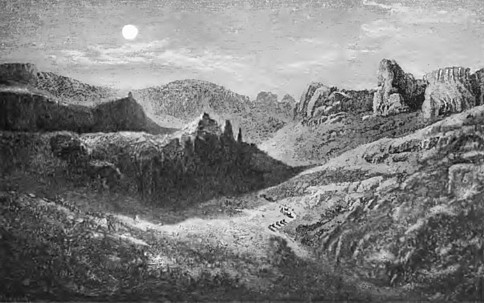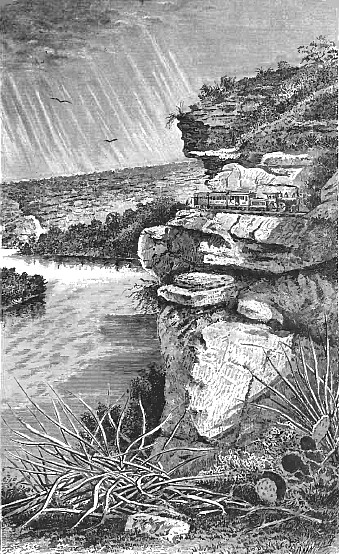Arizona has ever been the land of the Golden Fleece. It was the lure of gold that induced the viceroy of new Spain to send Fray Marcos to spy out the land. It was the same irresistible impulse that caused Coronado to brave desert and death in his expedition to the legendary Cibola; and, though he returned to Mexico broken-hearted in the belief that he had followed a will-of-the wisp, nevertheless the treasure was always there, but so securely locked in the fastnesses of the hills that its presence was not suspected. Little by little a few of the treasure chests of Mother Earth were discovered and opened; and, haltingly, with many hopes deferred and promises unfulfilled, with many chance successes and sudden fortunes, with riches that came by accident, with riches that came only from patient toil and scientific methods, mining in the State has advanced until today Arizona leads the nation in the production of metallic wealth. It ought to make an interesting study, this romance of Arizona's treasure troves, yet we must confess that as we read over what has been written here for this introduction is set down last we find much that is prosaic.
The first Arizona mineral locations were made along the present Mexican Border and worked in a small way by the Spaniards in the eighteenth century; later there was briefly the period of mining by Americans, who, like Ehrenberg and Poston, came into the Santa Cruz Valley in 1854; of the shafts that were dug in spite of the hostility of the savages; of the mills and furnaces that were successfully constructed, though the lumber had to be whipsawed and brought from mountain tops and all the machinery hauled over many weary miles of desert. The Ajo copper mines, in the southern part of the State, were first operated in the eighteen fifties, and the placers of the lower Gila, were worked about the same time, and yielded fortune to those who arrived first.
In the second year of the Civil War, placers were discovered along the Colorado, and by reason of their being, towns like La Paz, which was situated on the Colorado, 124 miles above Yuma, and once boasted of a population of five thousand people, sprang into existence. The glory of La Paz was short lived, for Ehrenberg, six miles farther up the river, on account of its better steamboat landing, in 1863, took the population away from the earlier town and left it an abode for owls and coyotes. Before the placer gold rush excitement ended in 1864, $2,000,000 in gold had been taken from the sands of Yuma County, whereupon mining interests shifted to lodes. In recent years placer mining has revived in Yuma County. In the Plomosa district, east of the Colorado, in the Posas Valley, from 1904 to 1912, gold to the value of $32,314 has been taken from sand, and from other districts, from 1906 to 1912, $52,985.
In spite of the continual hostility of the Hualpais, who had the disagreeable habit of shooting arrows at miners from ambush, prospecting in Mojave County began as early as 1858, and mines were worked in considerable numbers from 1863. There was every evidence that the country was exceedingly rich in minerals. From 1880 to 1883 the county is said to have produced $60,000 in gold and $485,000 in silver. According to Hinton, the product in 1887 was $200,000 per month. One of the biggest of the early discoveries was the Moss gold mine, near Hardyville. It is reported that, in 1865, two tons of its gold ore netted $185,000 in native gold. The McCracken and Signal, in the southern part of the county, were located in 1874, and yielded a total of over a million dollars before they suspended operations in 1880. Hinton states that up to 1876, 2,000 claims had been recorded in the county.
Mojave County is now dotted with rich mines, so many indeed that our limited space will not permit even a recital of the names. Mention, however, must be made of the Tom Reed, in the Oatman district, which in six years produced over $4,000,000 in gold. The Gold Roads is also a heavy producer of the yellow metal. Valuable turquoise deposits have been found near Mineral Park, southeast of Chloride. Both placer and lode mining were actively engaged in during the early years after the war, in Yavapai County, which at that time included all of Arizona north of the Gila and east of Yuma County.
Around Prescott, gold indications were found all through the hills, and almost every stream had rich placers. The leading mining districts were Weaver, Hassayampa, Lynx Creek, Turkey Creek, Humbug, Peck and Date Creek. Bancroft gives the gold products of Yavapai, in 1873, as $103,600; and from 1880 to 1883 as $110,000. The silver ore production in 1880-83 is given at nearly two million. It is interesting to read the names that the early Yavapai miners gave the prospects from which they hoped to derive their fortunes. The sentimental ones chose such appellations as "Aurora," "Naiad Queen," "Minnehaha," "Mezeppa," "Sunrise" and "Sunset." Some practical miners simply set down their claims as "Brunson and Barnum," or "Hatz and Collier"; the more fanciful christened their properties the "Big Bug," "Black Jack," "Little Joker," "Jack-on-the-Green," "Plug Ugly" and the like. An optimist records his mine as "Hidden Treasure," while a pessimist labels his, in advance, "Little Big Fraud."
THE VULTURE
The greatest of all Yavapai County's mines (now a part of Maricopa) and
indeed the richest gold mine of the State, was the Vulture, situated eleven
miles west of Wickenburg. It was discovered in 1863 by Henry Wickenburg, who
gave his name to the town. The old prospector knew that he had a mine the
moment he saw it, for scattered over the surface of the ground were pieces
of
quartz from which gold could be picked out with a pocket
knife. There was no water at the Vulture and all of the ore had to be hauled
over a desert road to the Hassayampa River, where it was
reduced in arastras which had been set up by contractors, who would buy the
ore from Wickenburg at the mine, paying him fifteen dollars a ton for it,
and taking out the ore themselves. The main Vulture claim was sold to B.
Phelps, a New York mining man, in 1866, for $75,000. Thereafter it changed
hands many times before the lode was finally exhausted. It has been said
that altogether $10,000,000 in gold was taken from the mine.
Other prominent Yavapai mines included the Tiger, the Peck, the Tip Top, and the Senator, Octave, and Congress. The richest placers of the county were at Lynx Creek where over a million dollars was taken from the gravel. Altogether, Rich Hill, in the Weaver district, yielded a half a million dollars in nuggets, from an acre, on its four-thousand foot summit, and another half a million from the gulches on its sides. Placer mining in the Weaver district from 1905 to 1912 produced $55,417 in gold.
A half million dollar smelter, now operating at Humboldt, handles the ores for numbers of small Yavapai County mines. There are also operating mills at Crown King and Mayer. The Monte Cristo mine, a few miles northeast of Wickenburg, is a silver-copper property of great promise, its thorough development work showing a splendid body of ore. In 1916, the United Verde Extension at Jerome opened up a wonderfully rich body of secondary copper ore, and stock in the company, which had gone begging at fifty cents, rose rapidly to $42.00.
Return
to The Arizona Page:
Arizona Gold Rush Mining History



